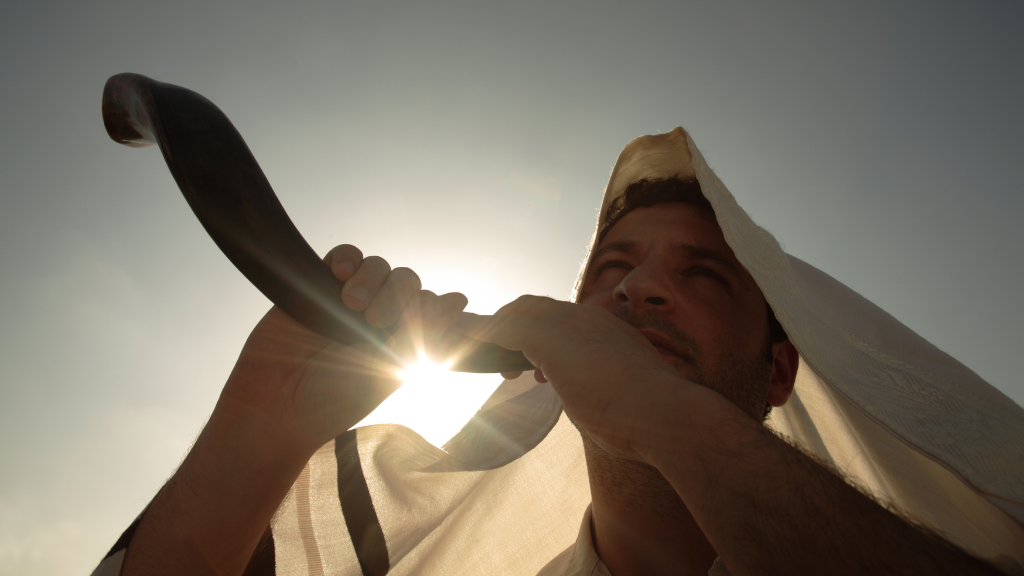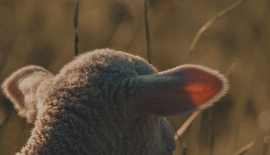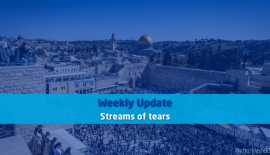From Rosh Hashanah to Yom Kippur
The festival of Rosh Hashanah—the name means ‘Head of the Year’—is observed for two days beginning on 1 Tishrei, the first day of the Jewish year. It is the anniversary of the creation of Adam and Eve, the first man and woman, and their first actions toward the realisation of mankind’s role in God’s world.
Annual Decree
Rosh Hashanah thus emphasises the special relationship between God and humanity: we are dependent upon God as our creator and sustainer, but God wants us to make His presence known and felt in His world. Each year on Rosh Hashanah, “All inhabitants of the world pass before God like a flock of sheep,” and it is decreed in the heavenly court, “Who shall live, and who shall die… who shall be impoverished, and who shall be enriched; who shall fall and who shall rise.” But this is also the day God is proclaimed as King of the Universe. Jewish mysticism teaches that the continued existence of the universe is dependent upon the renewal of the divine desire for a world when we accept God’s kingship each year on Rosh Hashanah.
Shofar
The central observance of Rosh Hashanah is the sounding of the shofar, the ram’s horn, which also represents the trumpet blast of a people’s coronation of their king. The cry of the shofar is also a call to repentance, for Rosh Hashanah is also the anniversary of man’s first sin and his repentance thereof and serves as the first of the ‘Ten Days of Repentance’ which culminate in Yom Kippur, the Day of Atonement. Another significance of the shofar is to recall the Binding of Isaac (Genesis 22), which also occurred on Rosh Hashanah, in which a ram took Isaac’s place as an offering to God; Abraham’s readiness to sacrifice his son is evoked, as a plea that the merit of his deed should stand by Israel as we pray for a year of life, health and prosperity. Altogether, faithful Jews listen to one hundred shofar blasts over the course of the Rosh Hashanah services.
‘The central observance of Rosh Hashanah is the sounding of the shofar, the ram’s horn, which also represents the trumpet blast of a people’s coronation of their king.’
A Piece of Apple
Additional Rosh Hashanah observances include: a) Eating a piece of apple dipped in honey to symbolise our desire for a sweet year and other special foods symbolic of the new year’s blessings. b) Blessing one another with the words “Leshanah tovah tikateiv veteichateim,” “May you be inscribed and sealed for a good year.” c) Tashlich, a special prayer said near a body of water (an ocean, river, pond, etc.), in evocation of the verse, “And You shall cast their sins into the depths of the sea” (Micah 7:19). And as with every major Jewish holiday, after candle lighting and prayers Kiddush is recited and a blessing made on the challah.
Yom Kippur
Yom Kippur is the holiest day of the year—the day on which Jews feel closest to God. It is the Day of Atonement—“For on this day, He will forgive you, to purify you, that you be cleansed from all your sins before God” (Leviticus 16:30).
For nearly twenty-six hours—from several minutes before sunset on 9 Tishrei to after nightfall on 10 Tishrei— faithful Jews ‘afflict their souls’: they abstain from food and drink, do not wash or anoint their bodies, do not wear leather footwear, and abstain from marital relations.
Before Yom Kippur, the Kaparot atonement service is performed; everyone requests and receives honey cake in acknowledgement that we are all recipients in God’s world and in prayerful hope for a sweet and abundant year; eats a festive meal; immerses in a mikvah; and gives extra charity. In the late afternoon, the pre-fast meal is eaten, following which the children are blessed, a memorial candle is lit, as well as the holiday candles. Then it is time to go to the synagogue for the Kol Nidrei service.
In the course of Yom Kippur, five prayer services are held: Maariv, with its solemn Kol Nidrei service, on the eve of Yom Kippur; Shacharit—the morning prayer, which includes a reading from Leviticus followed by the Yizkor memorial service; Musaf, which includes a detailed account of the Yom Kippur Temple service; Minchah, which includes the reading of the Book of Jonah; and Ne’ilah, the ‘closing of the gates’ service at sunset. The confession of sins (Hebrew: Al Chet) is said eight times in the course of Yom Kippur, and Psalms are recited at every available moment.
The day is the most solemn of the year, yet an undertone of joy suffuses it: a joy that revels in the spirituality of the day and expresses the confidence that God will accept our repentance, forgive our sins, and seal our verdict for a year of life, health and happiness. The closing Ne’ilah service climaxes in the resounding cries of “Hear O Israel… God is one.” Then joy erupts in song and dance, followed by a single blast of the shofar, followed by the proclamation, “Next year in Jerusalem.” Then everybody partakes in a festive after-fast meal, making the evening after Yom Kippur a Yom tov (festival) in its own right.
Adapted from www.chabad.org






